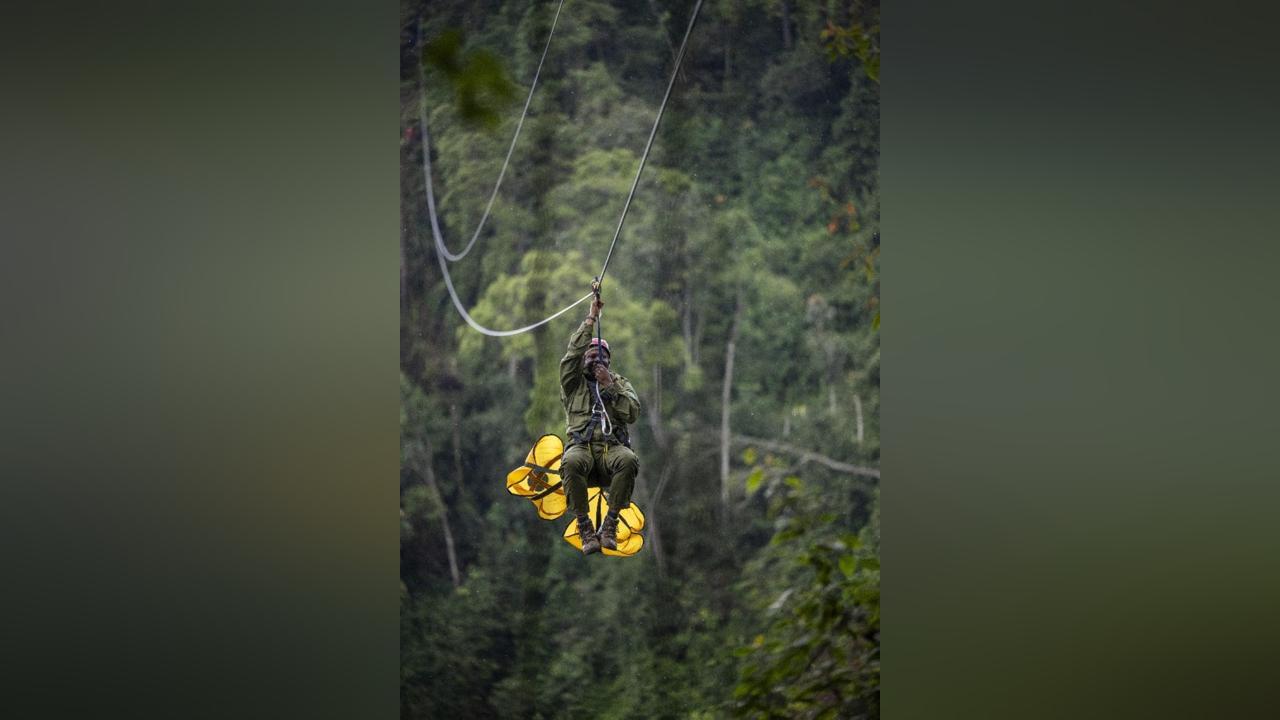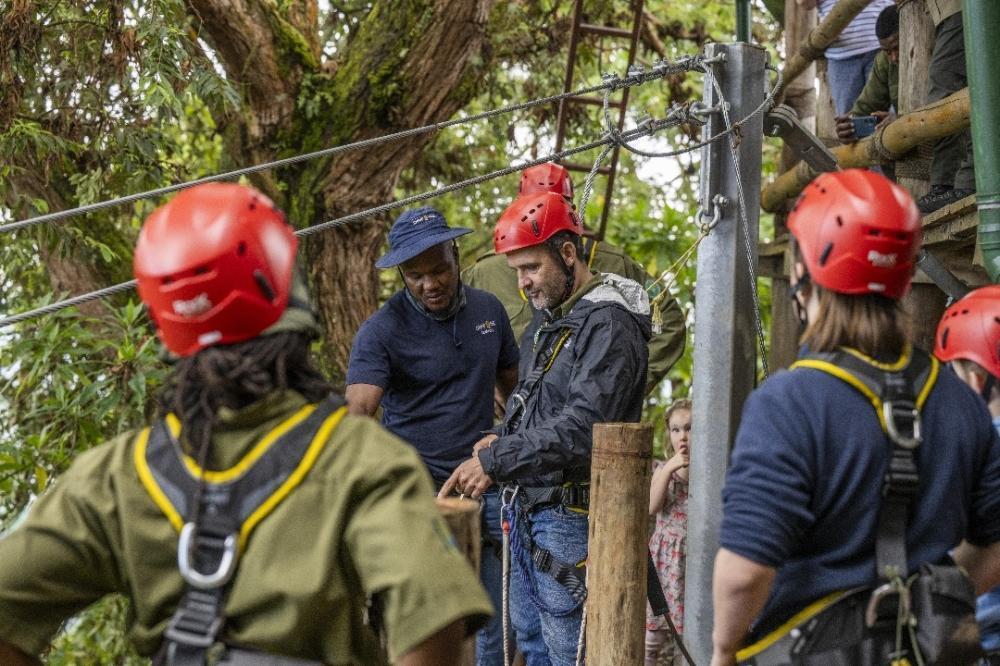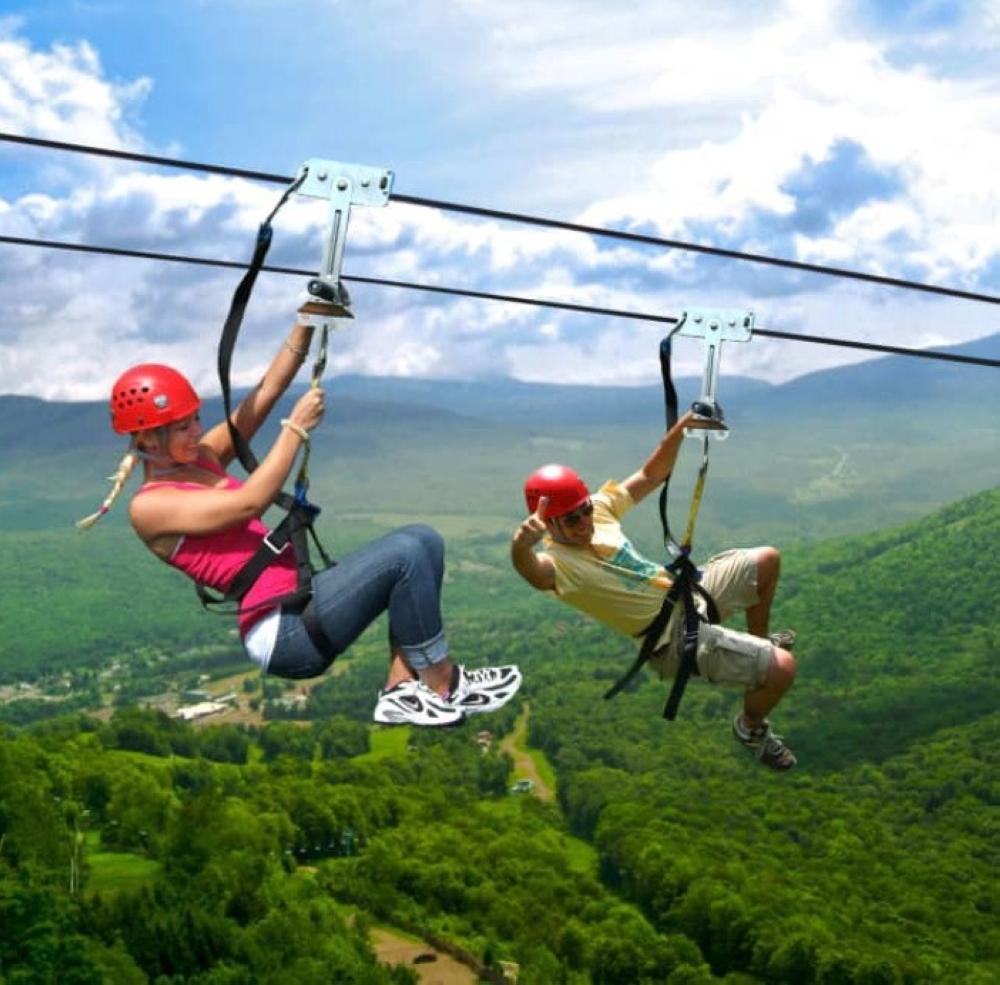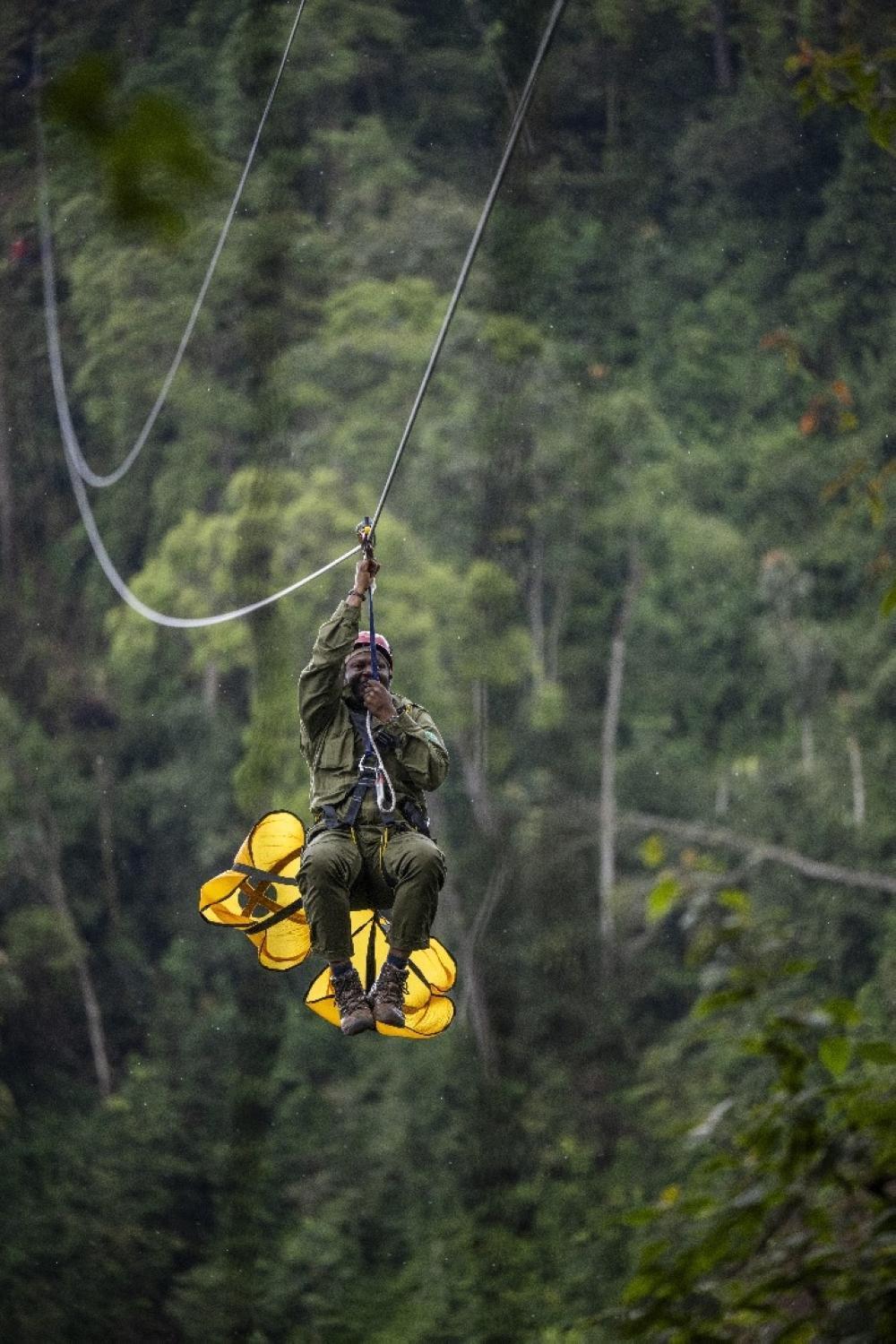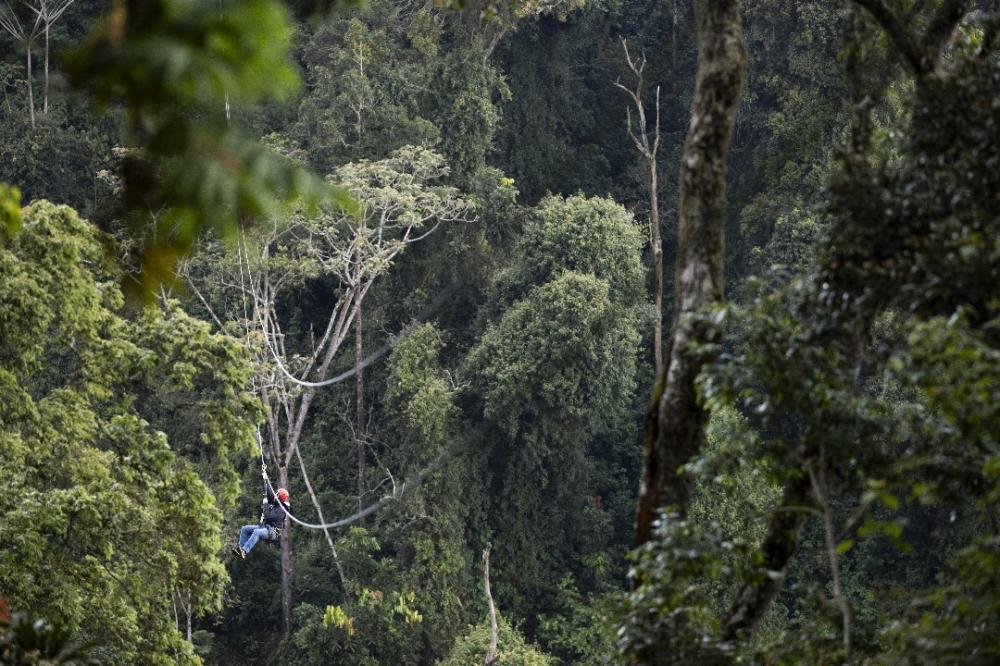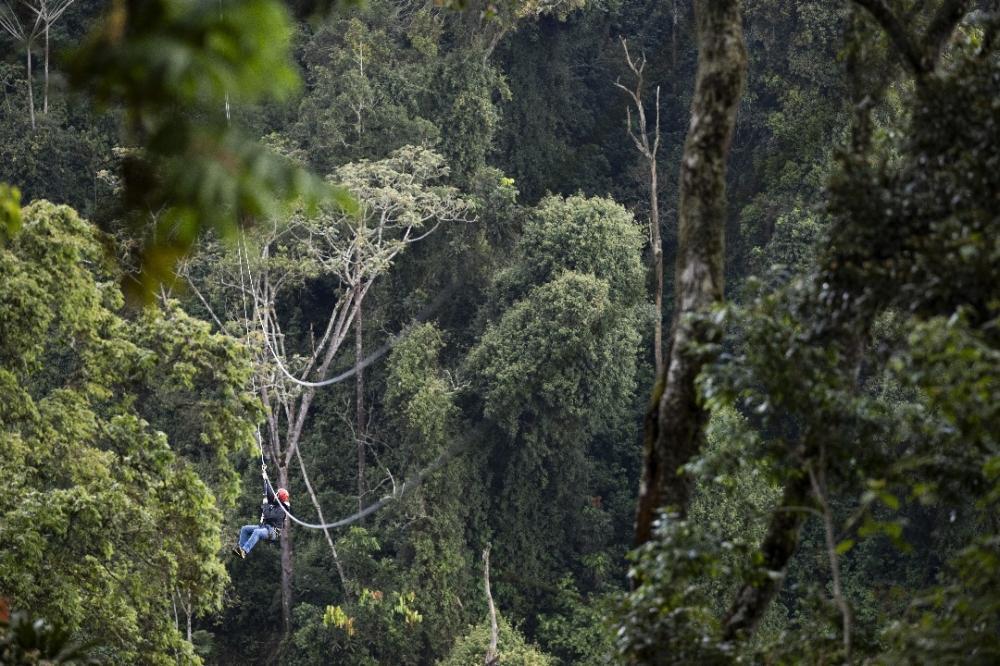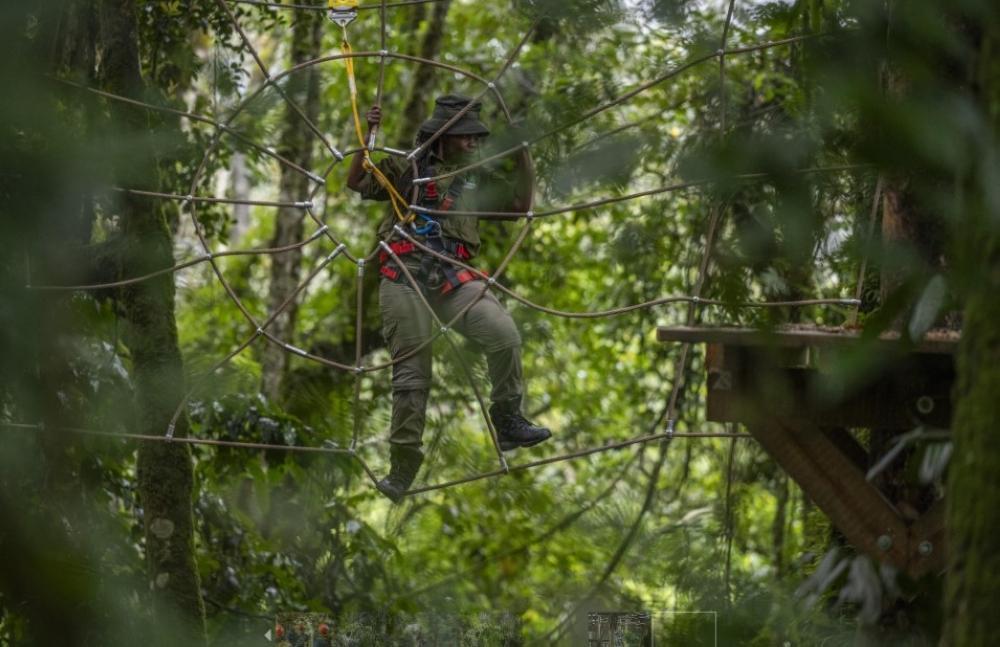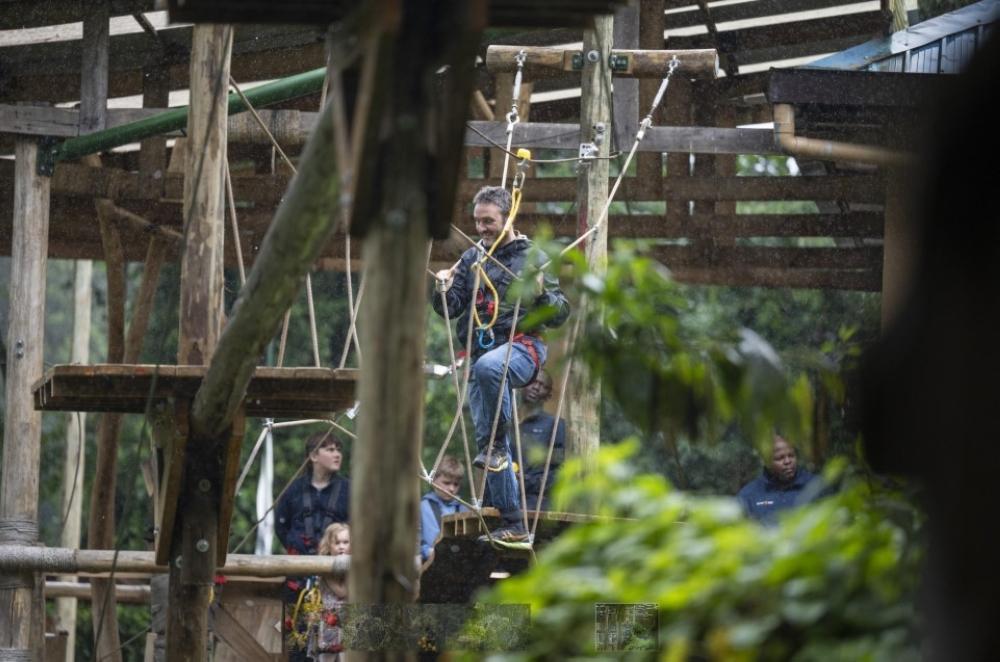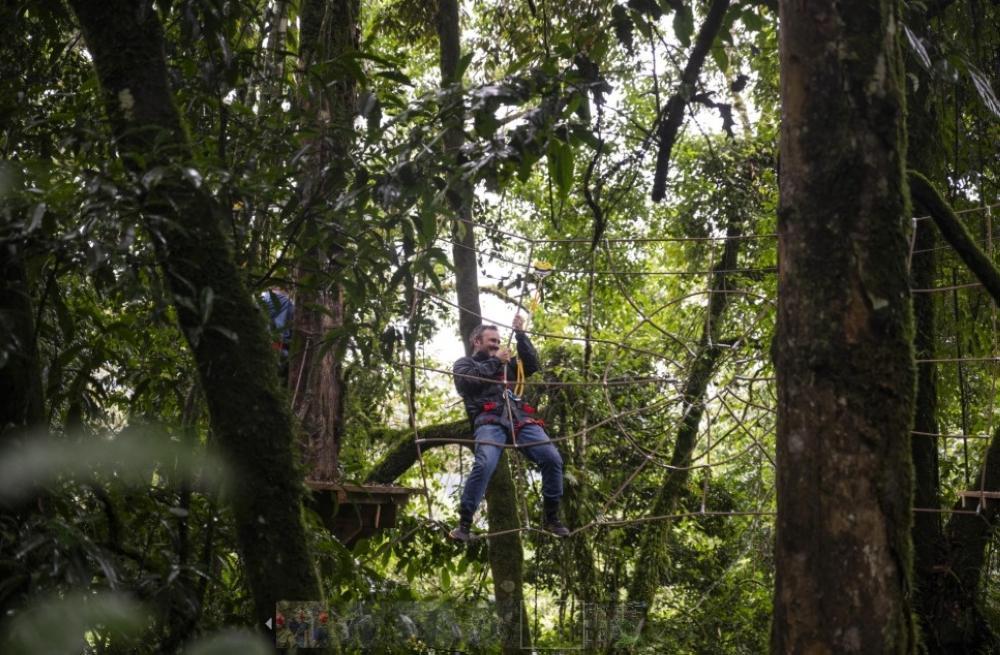Africa-Press – Rwanda. A new 1,850-metre zipline currently under construction in Nyungwe National Park is projected to attract 9,000 tourists, according to the Rwanda Development Board (RDB) in its Annual Report 2024.
A zipline is a cable or rope stretched between two points (often across a valley or forest) that one rides down using a harness and pulley system.
It is a fast and exciting activity commonly found in adventure parks or natural settings. Suspended by strong steel cables strategically placed within the jungle, the zipline will offer a bird’s-eye view soaring over the Nyungwe rainforest.
One of Africa’s oldest rainforests and a UNESCO World Heritage Site, Nyungwe National Park is rich in biodiversity.
A quarter of all of Africa’s primates (13 species) are found there, including the common chimpanzee. The park is also a birdwatcher’s paradise, with around 300 recorded species, nearly 30 of which are endemic to the Albertine Rift region.
Numerous plant species, such as orchids, also thrive in the park. Thanks to its abundant rainfall, Nyungwe is the most important catchment area in Rwanda, supplying water to 70% of the country.
A ridge running through the forest forms a watershed between the Nile and Congo River drainage systems.
A spring on the slopes of Mount Bigugu is said to be the furthest source of the Nile.
The Uwinka Trail in Nyungwe National Park is one of the park’s most popular hiking routes.
It spans approximately 17.8 km, with hikers typically beginning at the Uwinka Visitor Centre.
According to the RDB, “Connecting Uwinka to the Canopy Walkway, this zipline tourism product is projected to attract 3,500 tourists in its first year and 9,000 tourists by its fifth year.”
Protais Niyigaba, the Nyungwe park manager, told The New Times on April 15 that tourists will begin using the Nyungwe zipline by the end of June.
“The infrastructure is actually 99% complete. As we speak, it is being tested. At the same time, the park staff who will operate the zipline and the guides are undergoing training,” he said.
“The zipline is an important addition to Nyungwe’s ongoing efforts to diversify its tourism offerings, focusing primarily on products with the potential to attract more domestic tourists as well as visitors from the East African Community, in addition to international travellers.”
Rwanda’s national parks experienced strong growth in 2024, with visitor numbers rising by nearly 11 per cent and revenues increasing by 8.5 per cent.
This growth was led by Nyungwe National Park, which saw a 20% surge in visitors, according to the RDB report.
“More visitors mean more revenue, which supports the park’s long-term goal of financial sustainability by 2030, assuming external factors remain neutral. Our zipline is the second longest in the EAC,” Niyigaba added.
He said that in addition to the zipline built at Uwinka near the Canopy Walkway, a rope course has been completed near the Gisakura Park Reception, and is expected to open for tourism around the same time.
A third upcoming product, he noted, is Munazi Lodge, the first park-owned lodge, which is also expected to open within the next three months.
Munazi Lodge is a new eco-lodge currently under construction in Nyungwe National Park. Surrounded by rich biodiversity, it will offer experiences such as birdwatching, the canopy walkway, and chimpanzee trekking.
Other activities in Nyungwe National Park include primate tracking, birdwatching, hiking, waterfall trails, and community-based tourism experiences.
A 2021 report on the state of the wildlife economy in Rwanda estimated the value of Nyungwe National Park at $4.8 billion.
The installation of the zipline has completed. Tourists will begin using the Nyungwe zipline by the end of June 2025. According to officials
Nyungwe National Park Zipline expected to attract 9,000 tourists. The project is now under testing, tourists will begin using the Nyungwe zipline by the end of June 2025.
Nyungwe Zipline currently under testing.Photo by Gael Ruboneka V W
Tourists will begin using the Nyungwe zipline by the end of June 2025.Photo by Gael Ruboneka V W
For More News And Analysis About Rwanda Follow Africa-Press

